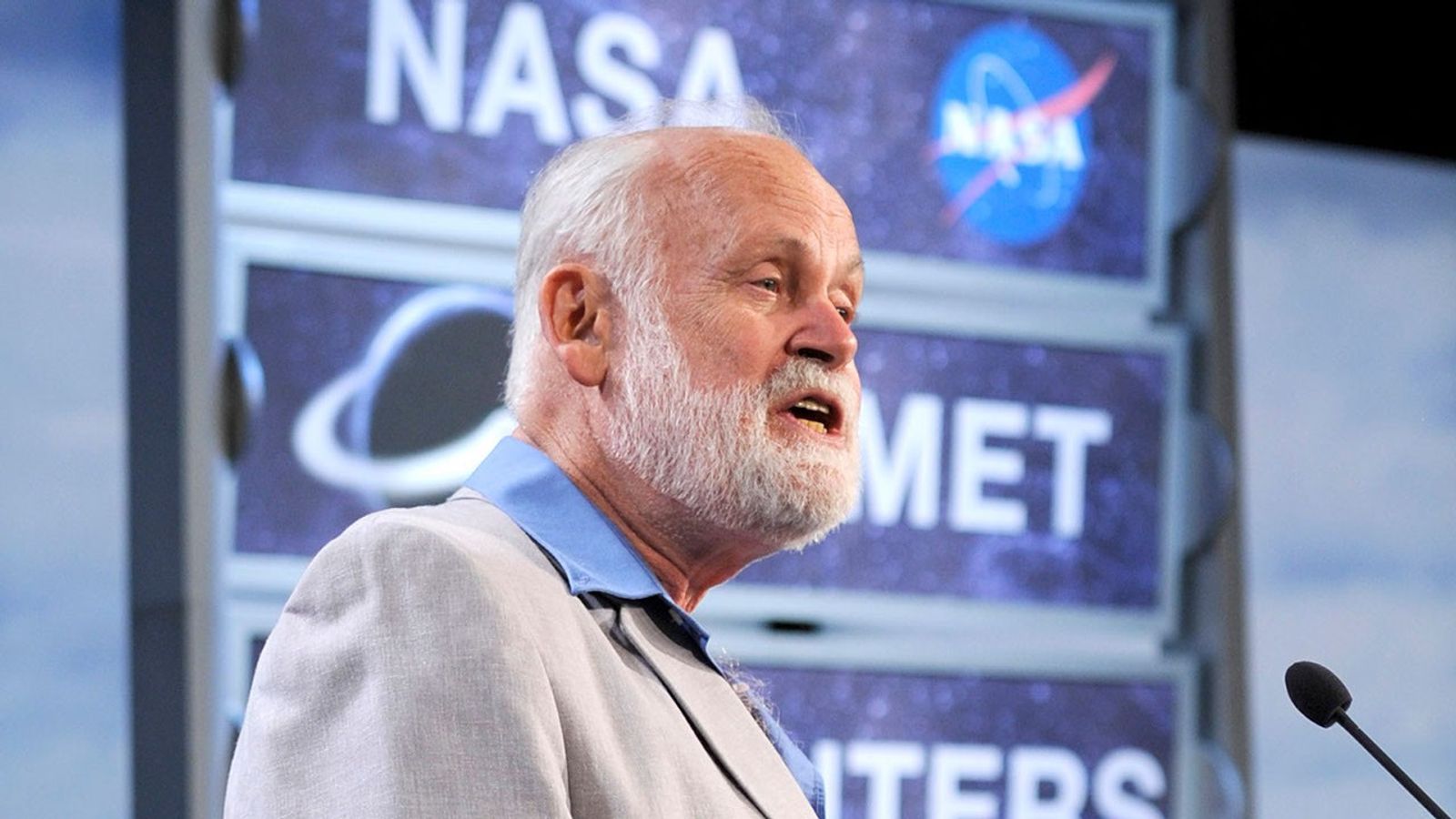
Michael A’Hearn (1940-2017)
Scientist - University of Maryland
Contents
- NASA posthumously awarded the Exceptional Public Service Medal to Michael A’Hearn, one of the world’s leading comet scientists. A’Hearn died May 29, 2017, at his home in University Park, Maryland at the age of 76.
- Illuminating the Primordial Dust from Whence We Came
- Defending Planet Earth
- A Deep and Lasting Impact on Comet Science and Colleagues
- Where are they from?
NASA posthumously awarded the Exceptional Public Service Medal to Michael A’Hearn, one of the world’s leading comet scientists. A’Hearn died May 29, 2017, at his home in University Park, Maryland at the age of 76.
The NASA Medal is for “fundamental work on comets and small bodies of the solar system, leadership in space missions, and ensuring public access to data from NASA missions and related projects.”
“Mike A’Hearn devoted his life to exploration, and his work has transformed our understanding of what comets are made of and how they interact within our corner of the universe,” said Jim Green, NASA’s former chief scientist. “This is a great loss.”
A’Hearn was most widely known as the principal investigator of NASA’s Deep Impact-EPOXI mission, which on July 4, 2005 released a washing-machine-sized probe that collided spectacularly with comet Tempel 1, while the main spacecraft observed the results. The powerful impact gave scientists their first-ever view of pristine material inside a comet. The event was front page news coverage around the world.

A’Hearn and his science team then proposed that NASA use the surviving main spacecraft for continued comet studies. With A’Hearn as principal investigator, the Deep Impact craft flew by Earth and found water on the moon on its way to an extended mission, designated EPOXI, with dual purposes: studying extrasolar planets and comet Hartley 2. The Deep Impact spacecraft later imaged two other comets Garradd (2012) and ISON (2013). The images and findings of these later missions further advanced comet science and attracted more media and public attention.
When NASA lost contact with the Deep Impact spacecraft in September 2013, A’Hearn said, “Deep Impact has been a principal focus of my astronomy work for more than a decade and I’m saddened by its functional loss. But, I’m very proud of the many contributions to our evolving understanding of comets that it has made possible.”
Illuminating the Primordial Dust from Whence We Came
A’Hearn’s many scientific contributions started well before and continued well beyond Deep Impact. During his more than 50 years at UMD, he studied comets using ground-based observatories and space-based observatories such as the Hubble Space Telescope, as well as the Deep Impact and other spacecraft. A’Hearn’s work after Deep Impact included being co-investigator on NASA’s Stardust-NExT mission to re-visit comet Tempel 1, and being a co-investigator on two instruments on ESA’s Rosetta mission: the OSIRIS camera and the NASA ultraviolet spectrograph “Alice.”
Colleagues say another major contribution to planetary science was A’Hearn’s nearly three decades as principal investigator for the Small Bodies Node, which is the part of NASA’s Planetary Data System (PDS) that specializes in the archiving, cataloging, and distributing of scientific data sets relevant to asteroids, comets and interplanetary dust. Under his leadership, the Small Bodies Node developed from a two-person group to a strong, UMD-based organization of 18 scientists and programmers.
Defending Planet Earth
A’Hearn was also an avid sailor, who once said that his second choice of profession after astronomy would have been ship’s captain. Another important part of his scientific work was helping in the detection of comets and asteroids orbiting in the “uncharted waters” of our solar system that could pose impact hazards to Earth and the living things she carries, and determining the best methods to prevent or mitigate such impacts.
He was vice-chair of a 2010 National Academy of Sciences/National Research Council report entitled: “Defending Planet Earth: Near-Earth-Object Surveys and Hazard Mitigation Strategies (2010) Chapter: 2 Risk Analysis.” He also chaired the mitigation sub-panel that wrote the section of the report devoted to protecting our planet from dangerous “near-Earth objects” or mitigating the damage of unavoidable impacts.
Said Lindley Johnson, NASA’s planetary defense officer and program executive for Deep Impact/EPOXI, “Mike was a joy to work with. Not only was he a treasured advisor to so many graduate students, he was a valued mentor to us all. I’d like to think of him now as having grabbed a comet by its vibrant tail – forever riding it around the solar system.”
A Deep and Lasting Impact on Comet Science and Colleagues
A’Hearn was named a Distinguished University Professor in 2000. This formal title denotes University of Maryland’s academic honor of highest distinction and is awarded to a limited number of UMD’s most accomplished professors. He also received the Gerard P. Kuiper Prize in 2008 from the American Astronomical Society Division for Planetary Sciences, which “recognizes and honors outstanding contributors to planetary science.”
A’Hearn’s impact on his field and the university was personal as well as professional. Colleagues say he was a great and thoughtful friend as well as a terrific teacher and mentor for younger scientists, many of whom now will continue his legacy by further advancing the understanding of comets and asteroids and the early history of our solar system.
“It was such a privilege to work with Mike, both as his Ph.D. student and as a colleague in NASA’s Near-Earth Object Observations Program,” said Kelly Fast, an NASA expert on asteroids and comets. “Mike’s leadership of the Deep Impact and EPOXI missions and the Planetary Data System Small Bodies Node has left NASA an amazing legacy, in addition to his major contributions to cometary and small-body science. His passing is a great loss to NASA and to the planetary science community.”
Where are they from?
Planetary science is a global profession.





























